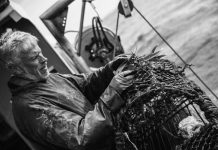I used to moor a boat in St. Katharine’s Dock, a huge deep cauldron of water that nestles cheek-by-jowl with the Tower of London. It was a fascinating venue, then owned by the building and construction giant Taylor-Woodrow. And, it was always inhabited by an awesome array of craft. From ancient Thames barges, that had been converted into corporate-hospitality gin palaces, to trans-Atlantic racing yachts, to scruffy little cabin cruisers like mine.
One stupendous and sparkling vintage timber-built yacht, complete with fully-salaried live-aboard skipper, stayed moored at its prime position pontoon for three and a half years. Without so much as toodling down the Thames for a drunken-jolly. It was inconceivable to me, how someone could afford, or even bear, to pay such a backbreaking finacial overhead, and yet never get the pleasure of actually using their boat.
One day in the early 90s, not long after the collapse of Communism and the restructuring of Russia, an unbelievable yacht made of pure titanium, pulled up outside the dock, in the shadow of Tower Bridge, and requested a berth for a few months. The yacht, a pure pleasure boat, was loosely estimated to have cost around £30 million to build, it was registered to a Russian flag and was captained by an ex Russian naval officer. But all the other guys on board, were a different breed entirely. All wore black suits, with thick muscular necks bulging over their starched virgin white collars. They never smiled. And as far as I could tell, they never took off their sunglasses, day or night.
‘Russian Mafia’ whispered the lock keeper, to me one day. ‘Got to be’. And a few weeks later he had what he claimed was concrete confirmation of his assessment. He been urged by his boss to go and collect the mooring fee from the Russian boat as it was well overdue. On making his request to the men in suits, he was paid in cash.
‘The galley table was covered in big wads of bank notes’ he claimed. ‘Dollars, pounds, God knows what else. They were loading into metal suitcases. They just handed me the mooring fees for six months and never said a single word.’
In those days, so called Russian Mafioso were being accused of everything from selling off military hardware, to smuggling precious Art works out of the museums of St Petersburg, into the hands of American and European collectors. But, the Russian mafia are now in the frame for an altogether different trade; the traffic of illegal caviar.
In 2003, a covert investigation by HM Customs and the National Criminal Intelligence Service, code named Operation Ribbon, raided shops in Kensington High Street and recovered over 200 tins of illegal caviar. With a street price of over £2000 a kilo, caviar dealing is almost as lucrative as cocaine. And over the last five years, Customs officials have seized over one and a half tons of illegal caviar worth over £3 million.
The largest recent haul was made at Manchester airport in 2002 when 450 kilograms, or a million quids worth, was seized in one raid. During the days of the Communist Soviet Union, the caviar trade was regulated with rigorous efficiency. Now, there are real fears the trade is not only out of control, its impact on sturgeon stocks in Russia is going to be catastrophic.
Caviar is basically salted fish eggs which comes from three different types of sturgeon: the Beluga, Oestra and Sevruga. The very best is Beluga harvested from the Caspian Sea. And the largest caviar fisheries in the world are in Astrakhan in Russia.
Good quality caviar should never taste salty. It’s said to have the consistency of butter and has been described by experts as being ‘a breath of fresh clean ocean air’. The best is made using the ‘malossol’ method. Malossol means little salt. Caviar is always sold in jars or tins. Beluga in blue tins, oestra in yellow and sevruga in red.
The first recorded caviar fanatics were the ancient Azeris and Persians who lived in the former Persian Empire that straddled the river Kura. They call caviar ‘chav-jar’ which means ‘cake of power’, and believed it to have powerful medicinal properties which could cure a range of diseases. As a result, it’s always been shockingly expensive. Even in the 2nd century BC, a big jar of caviar could set you back a hundred sheep.
The Greeks were mad for caviar, the Romans would greet it to the table with a herald of trumpets, but no one showed quite the appetite for those priceless fish eggs as Tsar Nicholas II, who collected eleven tons every year of the finest caviar, as a tax from the fishermen of Azerbaijan and Astrakhan.
Although Tsar Nick had a huge hunger for the good stuff, he was only one man. Now however, the global hunger for caviar and the global ease of marketing and distribution means that millions more people world-wide have developed a taste. Like shark’s fin soup, it used to be a luxury for a select few, now it’s become a regular treat for millions. Top grade caviar can now be bought online even, which is in some ways a fantastic feat of technology, but in other ways, a catastrophe waiting to happen.
The World Wildlife Federation has now placed beluga sturgeon at fourth place on its endangered species list. The US is close to enforcing a ban on beluga caviar imports because the population of sturgeon in the Caspian Sea is estimated to be at a critical level.
In 1978, the population was reckoned to be in the region of 142 million fish, yet some recent surveys put the current population as low as half a million fish. Sixteen thousand tons of Caspian sturgeon were said to have been caught in 2003, although only 1,000 tons were landed legally.
So, once again, it does look as though our rampant greed for the good life and our ability to shrink the big old globe to the size of a corner shop, is at serious risk of taking the big fat golden goose and giving it a right old stuffing.









